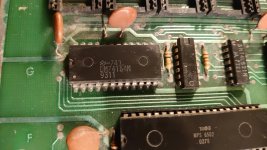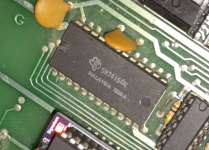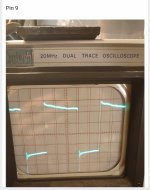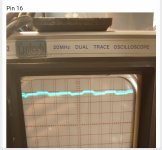Nivag Swerdna
Veteran Member
I think we have seen quite a few reasons to trust the G2 74154, particularly looking at SEL8 and nSEL8 but it cannot hurt. A good opportunity to work on dual trace skills. With a NOPPER... put one channel on A15 which is exposed on the NOPPer as START (or STOP) header and another on a G2 output. When I fixed my PET I did this... it's very satisfying seeing the traces line up and such a good test I built NOPulation into my ROM/RAM board design.
I'll fade into the background in anticipation of G4 being replaced.
I'll fade into the background in anticipation of G4 being replaced.






